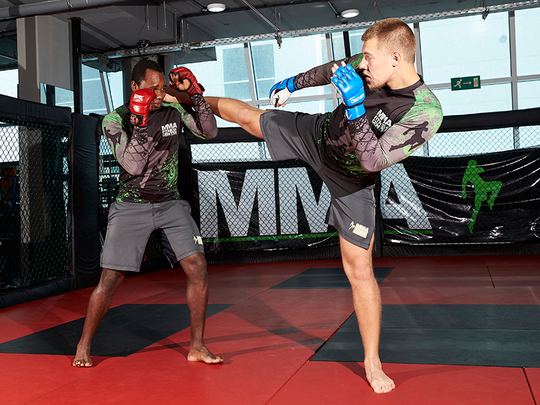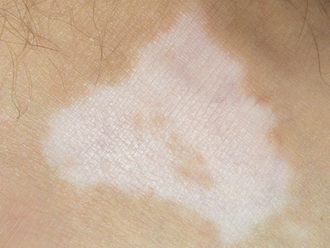
Punch
When punching, the target should be hit with the two largest knuckles with elbows fully extended and the fist in line with your face. The main thing to remember, though, is where the force comes from: the legs. A strong punch requires a thrust from the corresponding leg, turning on your toes, flexing the core and twisting the shoulder as the fist flies forward. That’s all when using the weaker left hand. When using the right, the same principles apply but you can stomp your foot into the ground as you punch, for a stronger hit.
Shift
After you’ve begun to master the stance for punching, it’s time to move on. It looks easy, the way boxers shift their feet around the ring, but it’s actually quite taxing on the ankles and takes concentration to get used to. When moving forward, you need to push from the back foot first (in order to maintain balance and stability) and when retreating, it’s crucial to begin the move from your front foot. Lateral movement follows similar principles, with one foot providing the thrust and the other giving balance.
Combining movement with punching is the next step. A slight twist on your front foot’s toes should match a stomp into the ground and your forward left jab.
Grappling
First, your front leg should be placed between the opponent’s legs — make a triangle. Take a deep step between their legs until your front shoulder hits their waist and arms catch their legs. Different varieties exist — in the example above, one hand is catching the leg, the other under his hips. Keeping the back straight, and then using the power in your legs, lift the opponent off the ground. After that, you can do a few variations of throwing them on the mat.
Stance
We start with the basic stance. If you’re right-handed, it’s left foot forward at a roughly 45-degree angle from the supporting right foot. The forward foot should be pointed slightly inward, while the right foot a little bit outward and the knees marginally bent.
Kick
A kick starts from your rear foot. There are two basic types — defensive and offensive. The former sees you raise a knee, then push outward from just under the toes, keeping the leg in a straight line. The standing leg should be slightly bent at the knee with the grounded foot slightly outwards.
The offensive kick is slightly harder to get the hang of. Using the hips for momentum, raise your knee and pivot on the standing foot to deliver a powerful roundhouse blow. To practise the correct motion, try to knee-smash a heavy bag. The movement can be adjusted to deliver the kick low, medium or high.











